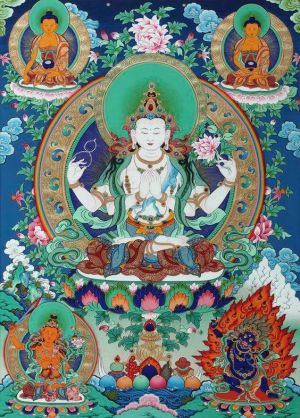Mongolia, With Deep Ties to Dalai Lama, Turns From Him Toward China
By Edward Wong
Mongolia, whose rulers played a role in establishing the Dalai Lama centuries ago, no longer welcomes him.
Remarks by its foreign minister this past month were the latest sign that another country had withered under pressure from China over the contentious issue of the Dalai Lama, the Tibetan spiritual leader.
The minister, Tsend Munkh-Orgil, told the Onoodor newspaper that the government “feels sorry” for allowing the Dalai Lama to visit Mongolia in November and that the Dalai Lama “probably won’t be visiting Mongolia again during this administration,” according to Bloomberg News. The Foreign Ministry confirmed the remarks, according to The Associated Press.
The reaction by Mongolia surprised some scholars because of the country’s deep ties to the Dalai Lama, which date from the 1500s. Even the title alludes to those roots: Dalai means “ocean” in Mongolian. The Chinese government had objected to the visit by the Dalai Lama, which began on Nov. 18 and took place over four days, even though it was not made at the invitation of the Mongolian government and was religious in nature. China canceled meetings with senior Mongolian officials in response.
China has long pressured countries, including Western ones, to ban visits from the Dalai Lama, who lives in exile in India. Chinese Communist Party leaders consider him to be an enemy who advocates Tibetan independence from China, although the Dalai Lama has said he seeks only greater autonomy for Tibetans.
In one sense, Mongolia’s reaction to China, a neighbor that has the world’s second-largest economy, was predictable. Mongolia is dealing with financial problems and is seeking a large loan from Beijing. Until a recent crash, the Mongolian economy had been growing fast, fueled by mineral extraction.
But, at the same time, Mongolia has tried to distance itself from China and Russia, and has become a United States military partner.
It is also a traditionally Buddhist country with ancient ties to Tibetan Buddhism and to the history of the Dalai Lamas, and the foreign minister’s remarks alarmed some historians and Tibet advocates.
When the White House Was Full of Claws, Scales, Stripes and Tails “This is part of a near-global collapse in diplomatic capacity to handle certain kinds of pressure from China, which is, of course, far more acute for small, landlocked neighbors than major powers,” Robert J. Barnett, a historian of modern Tibet at Columbia University, said in an email.
John Delury, a China historian at Yonsei University in Seoul, posted on Twitter that Mongolia’s reaction was “ironic given that it was a Mongolian Khan who invented Dalai Lamaness.”
The Dalai Lamas arose from the actions of Altan Khan, a 16th-century Mongolian leader who controlled a region next to northern China, which was ruled by the ethnic Han emperors of the Ming dynasty.
Three centuries earlier, Kublai Khan, the founding emperor of the Yuan dynasty, an era when Mongolians ruled China, had become interested in Tibetan Buddhism and had taken on a Tibetan teacher.
But it was Altan Khan who made Tibetan Buddhism an official religion among Mongols. He did this when the head of the Gelug school of Tibetan Buddhism, also known as the Yellow Hat school, visited him in 1577. On that occasion, Altan Khan gave the spiritual leader the title of Dalai Lama. With Dalai meaning “ocean” in Mongolian and Lama being a Tibetan spiritual teacher, the title translates as “ocean of wisdom.”
This bound the Mongols and Tibetans and established a relationship between Mongolian rulers and the Gelug school. Since then, the position of the Dalai Lama has been tied to complex politics in Asia. The two heads of the Gelug school preceding the one who visited Altan Khan were also given the Dalai Lama title retroactively.
The Third Dalai Lama, Sonam Gyatso, the one who had received his title from Altan Khan, died in 1588 in the Mongolian region. A great-grandson of Altan Khan, Yonten Gyatso, was then named by senior Tibetan lamas as the Fourth Dalai Lama and the reincarnation of Sonam Gyatso. (Each Dalai Lama is considered a reincarnation of the previous one.) Yonten Gyatso has been the only Mongolian to be chosen as a Dalai Lama.
The Dalai Lama’s Mongolia visit has raised another question. Many people have begun speculating over when and where the reincarnation of the current Dalai Lama, the 14th, will appear after he dies. The Dalai Lama, who is 81, has said that he may be the last of the Dalai Lamas, while holding open the possibility of a reincarnation — including one outside Tibetan regions, where Communist leaders would no doubt try to control any designated reincarnation.
Some people have said that the next Dalai Lama could be found in the Tawang region of northeastern India, home of the Sixth Dalai Lama. Tawang also happens to be a disputed region in the Himalayas that China claims as its territory.
But the Dalai Lama’s recent visit suggests to some scholars that Mongolia could be the place to watch, especially given the history of the Third and Fourth Dalai Lamas.
“The interesting thing about the Dalai Lama visit was that it may be a signal that his reincarnation could appear there,” Mr. Barnett said. He added that given China’s hostility, this is “something that would be potentially disastrous for Mongolia.”
